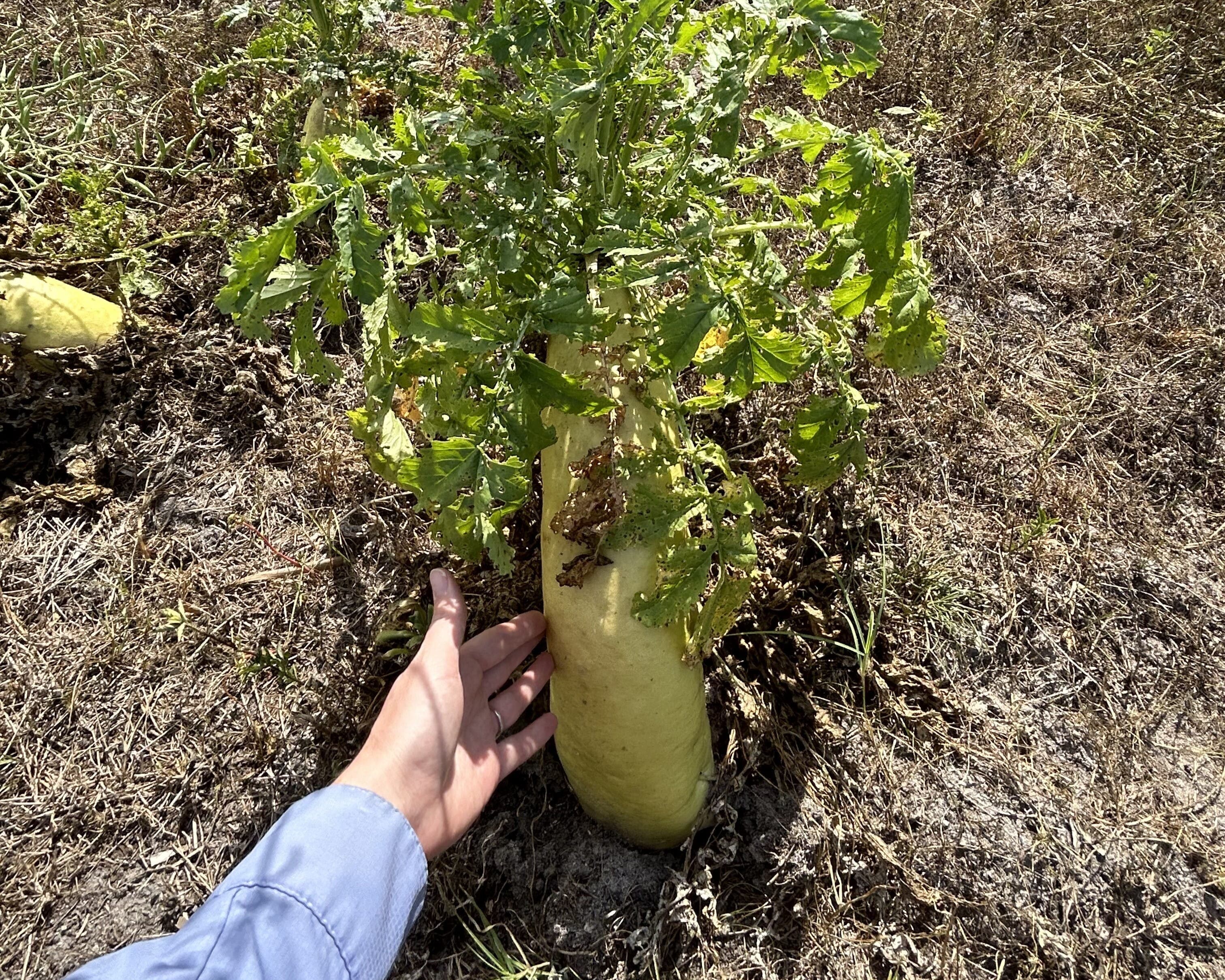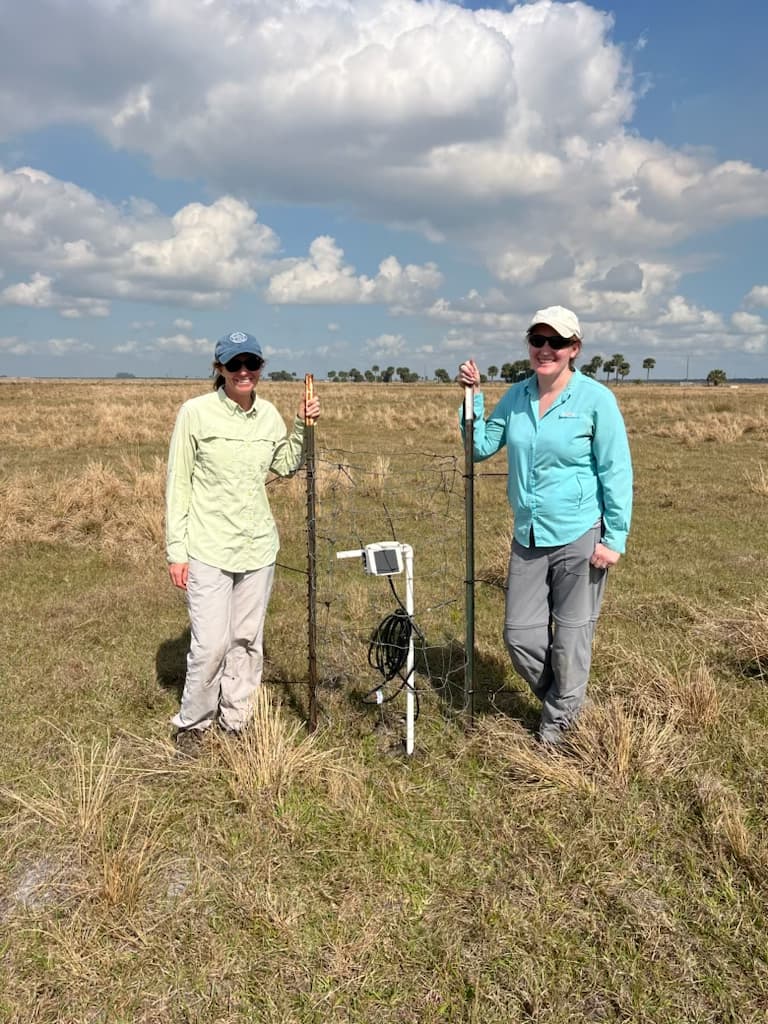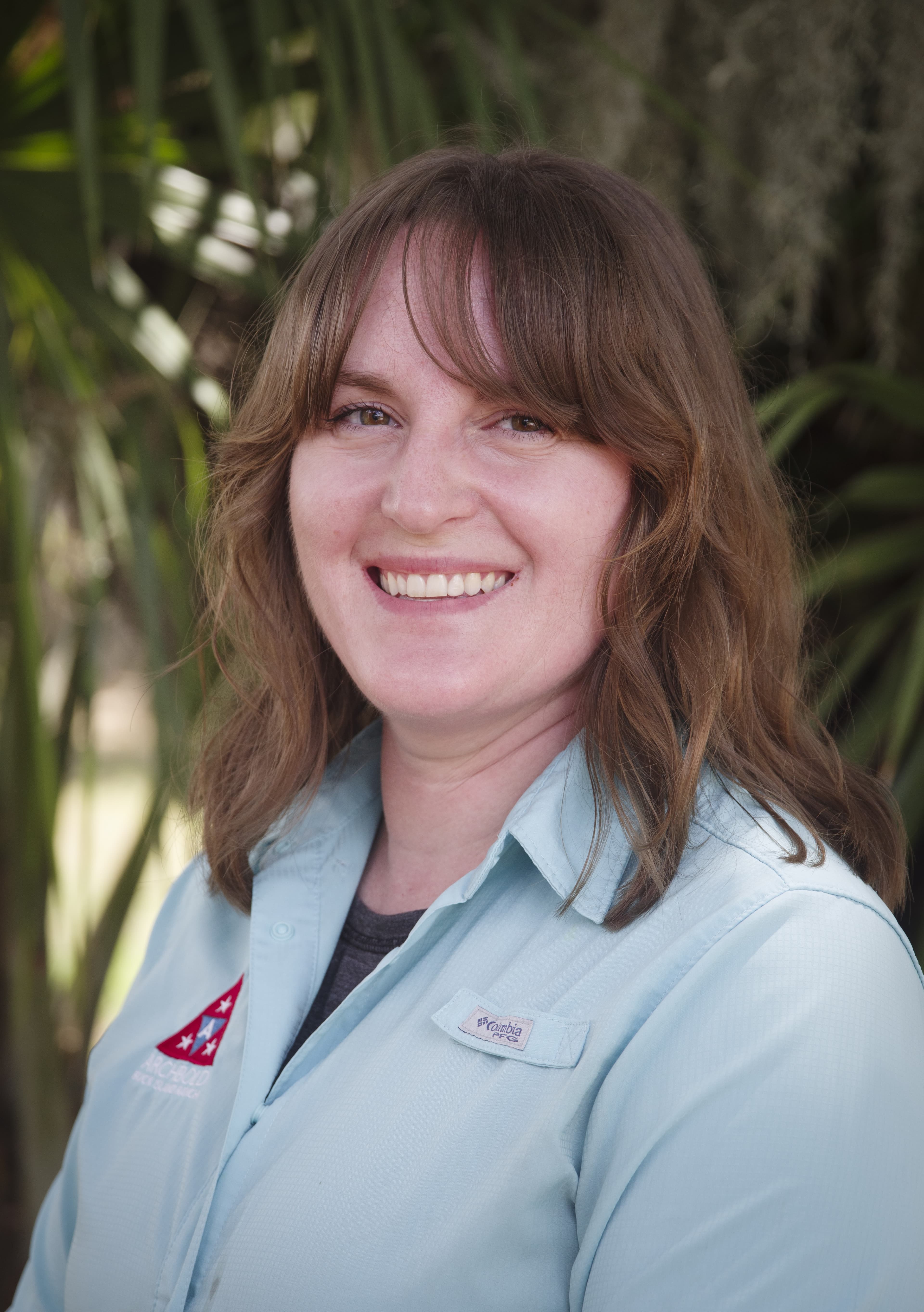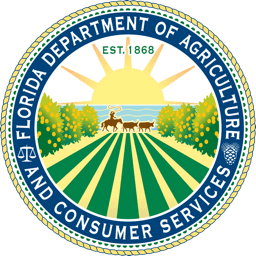 Photo by: Karen Rice-David
Photo by: Karen Rice-DavidSeeding for Soil Health
We evaluate the effectiveness and feasibility of overseeding cover crops into ranchlands to improve soil health and water quality.
Florida’s ranchlands have been linked to nutrient run-off that negatively impacts the greater Everglades watershed. Today, Phosphorus fertilizer is used sparingly, or not at all, yet Phosphorus remains in the soil from applications that occurred decades ago. At Buck Island Ranch we are exploring ways to capture nutrients to improve water quality and soil health. One idea we are exploring is the use of cover crops. The study takes place in pastures with planted bahiagrass, which is what cows typically graze. Twice a year different experimental seed mixes are planted into bahiagrass pastures. This method is known as overseeding, as the seed mixes are planted into the pasture over the bahiagrass. Cover crops include: 1) Oats 2) Wheat Crimson clover 3) Rye 4) Turnips 5) Daikon radish 6) Sun hemp 7) Pearl millet 8) Aeschynomene 9) Hairy vetch - Different plant functional groups are intentionally included in the seed mixes. The legumes may enhance soil nitrogen and microbial biomass. The radishes and turnips have taproots that may break up the soil and improve air and water flow into the deeper soil layers. More air and water in the soil will help other plants capture the nutrients trapped in the soil. Some species may improve the pasture productivity and forage quality. In addition to evaluating if these seed mixes can improve pastures above and below ground, we aim to see which seed mix combination is able to establish most successfully in our region of south-central Florida.
Major Findings & Impact
Project Details
More about this project
Data and Analysis Types
Soil nutrients (P, K, micronutrients), Root biomass, Fine vs course root production, Soil organic matter Soil Phosphorus storage capacity, Plant composition and diversity, Forage production and quality, Soil carbon and nitrogen
Primary Location(s)
Buck Island Ranch
Years Active
2022 - Present
Related People

Featured Publications
“Water quality is our top priority. By absorbing excess nutrients and improving soil health, that will also improve forage growth. By doing variety [seed] mixes - that will extend the growing season, which benefits the grazing period during the winter months for the rancher. These plants will absorb nutrients, and as they breakdown at the end of the season they add nutrients and organic matter back to the soil. As a management program, the landowner can re-seed some species and cut seed to increase their acreage. It’s a win-win for all." – David Royal, The Nature Conservancy


.jpg&w=3840&q=75)

.png&w=3840&q=75)


